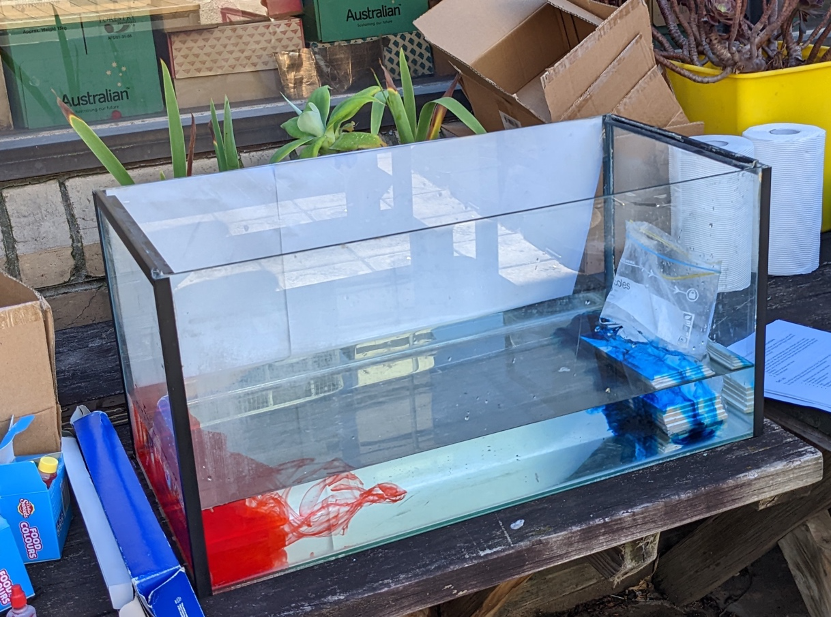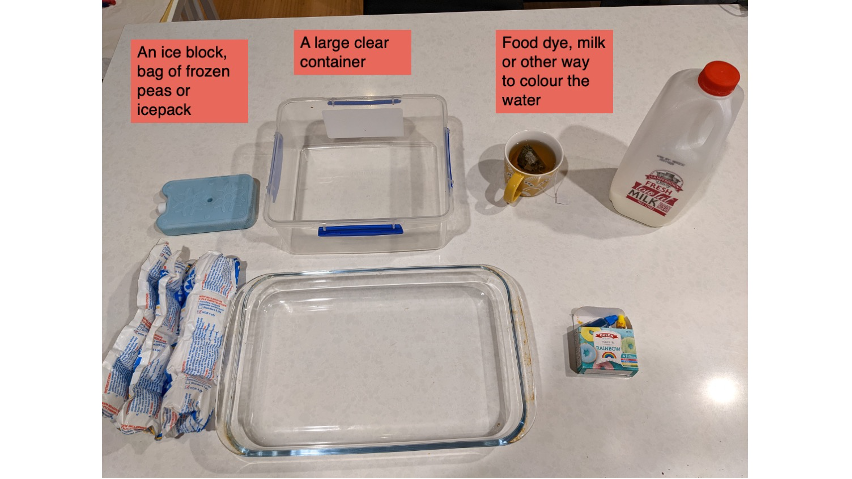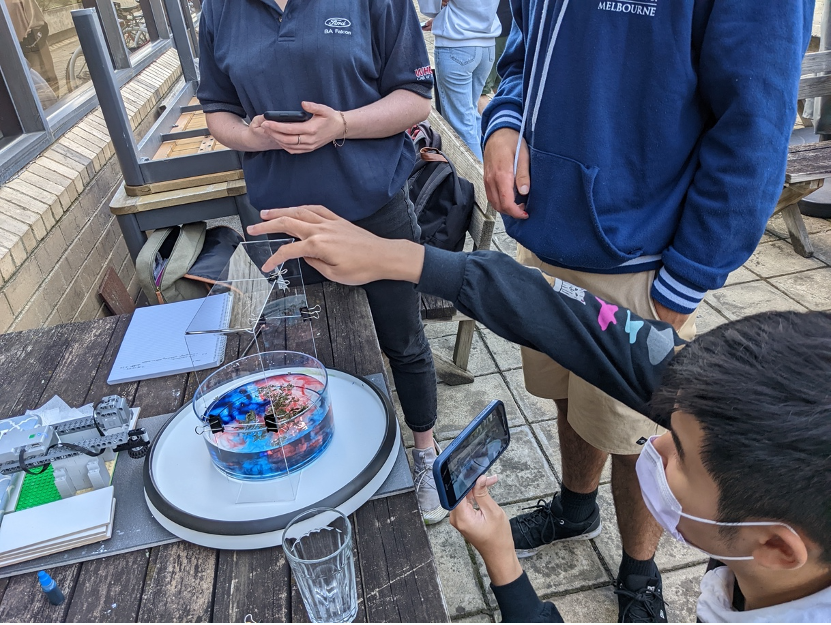- Wed 21 September 2022
- Field Reports
- Linden Ashcroft
- #Field report, #lego, #K-12
[Note from Spencer: This post written by Linden Ashcroft is part of our ongoing Field Reports series, where DIYnamics users across the country—-and in this case, the world(!)—-share how they’ve used the DIYnamics kit and materials in local communities.]
Thanks to some teaching funding from our faculty, my colleagues and I have been able to bring DIYnamics Down Under in 2022!

One student’s photo of their experiment using the DIYnamics kit!
We have used the DIYnamics rotating tanks in undergraduate teaching this semester to introduce how rotating fluids behave. In combination with a fish tank and some creative alternatives for online students, we explored the impact that rotation and temperature gradients had on our atmosphere and oceans.
Most of the practicals in our class are computer-based, so working with potentially messy equipment was a thrill for me and the students. It was also a highlight for the class to conduct in-person experiments after two years of online learning.
Step by step
The experiment was designed so the students could explore the different elements of our atmosphere step by step. In the first stage, a temperature gradient was set up in a fish tank, using food dye to show the flow of cold water underneath warmer water, before overturning and eventually mixing.

Stage 1: A non-rotating temperature gradient. Ice was placed at one end of the tank, and we let this experiment run during the entire practical.

Stage 1, at home edition. For students working online, they were invited to do the same thing with kitchen supplies. Students didn’t find milk or tea to be great tracers, so they used dye, soy sauce and soft drink instead. Introducing different fluid densities added another element of complexity!
Stage 2 asked the students to consider how a stationary fluid behaves by delivering drops of food dye into a non-rotating vase of water. In stage 3, we added rotation, following the generous instructions of Mirjam Glessner. Some students struggled to wait for solid body rotation, but those who did were rewarded with clear vertical structures.

Set up in a makeshift teaching space, as our labs were being renovated!
Finally, we added a temperature gradient, by placing ice in the middle of the tanks. This was a real kitchen science experiment, with tea leaves and old jam jars acting as crucial equipment!

Students in action
Lessons learnt (by us)
We were impressed by the self-led experiments the students conducted after completing the structured part of the practical. Using the app-driven motors enabled the students to easily vary the speed of their tanks and see what that did to eddy generation. Some groups tried different temperature variations, to see what would happen with warm water in the tanks, rather than room temperature water. Finally, being in the Southern Hemisphere, some groups had to explore what would happen if the tanks rotated in the other direction!
Beautiful pictures and videos were submitted as part of the practical assessment, and almost all students told us they enjoyed the class. However, in a post experiment survey, only two thirds of the students felt the activity improved their understanding of the atmosphere’s behaviour. That means there’s room for improvement, which is great because I am excited to play with the equipment again next year.
…
